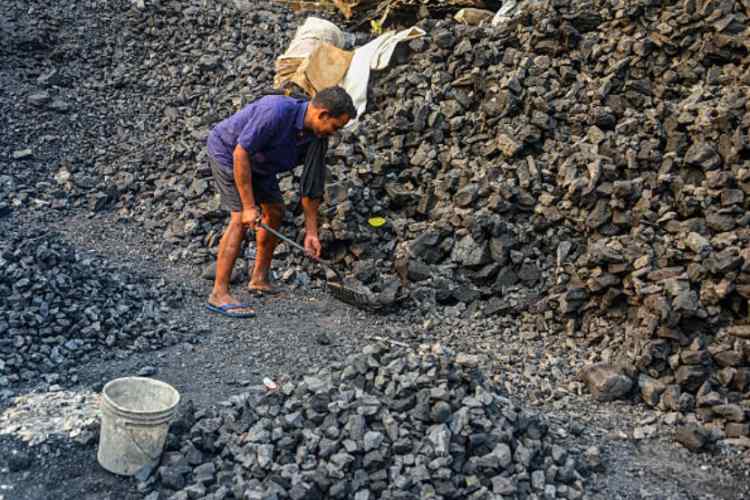
India coal production vs climate change: India’s milestone of producing 1,000 million tonnes of coal in a single fiscal year has drawn the predictable chorus of criticism from parts of the international community—mostly developed nations accustomed to the luxury of energy security. These critiques, though familiar, miss the complexities of India’s energy situation. They come from countries that built their prosperity on carbon-intensive growth, now casting judgment on a nation striving to maintain its developmental momentum while simultaneously advancing one of the world’s most ambitious renewable energy transitions.
Calls for India to accelerate its decarbonisation efforts ring hollow when not accompanied by meaningful action from the West—be it through climate finance, technology transfer, or equitable cooperation. The asymmetry at the heart of the global climate discourse has never been more evident.
READ | UMEED Act: New Waqf law redraws boundaries between state and faith
With 1.4 billion people—nearly a fifth of humanity—India’s energy demand is not just about economic growth; it is a matter of human necessity. While the average per capita electricity consumption in the West remains significantly higher, India is still grappling with the foundational goals of universal electrification and industrial development. Expecting India to adhere to the same emission-reduction timelines as nations that have long overshot their share of the global carbon budget is not only inequitable—it is unrealistic.

Yet, India’s commitment to clean energy is neither tokenistic nor inadequate. It is the third-largest producer of renewable energy globally, and nearly 44% of its installed electricity capacity now comes from non-fossil fuel sources—a target reached almost a decade ahead of schedule. The country’s plan to achieve 500 GW of renewable capacity by 2030 is not merely aspirational, but backed by policy reform, investment momentum, and technological innovation. The National Green Hydrogen Mission signals India’s intent to lead in the clean energy economy. Despite these strides, the international narrative often fixates on India’s coal use, failing to acknowledge the practical need for a phased, responsible transition that preserves energy reliability and economic competitiveness.
The West’s net-zero rhetoric increasingly appears more performative than pragmatic. While India has pledged to achieve net-zero emissions by 2070—a target grounded in economic and technological realism—many developed countries continue to expand fossil fuel investments even as they champion climate diplomacy. The same European countries that decommissioned coal plants for climate reasons were forced to reactivate them in 2022 due to geopolitical energy shocks. Norway, celebrated for its EV adoption, remains a major fossil fuel exporter. The US and UK, both vocal about carbon neutrality, have greenlit new oil and gas exploration projects, even as they urge developing nations to move faster.
This duplicity is compounded by the chronic failure of developed nations to fulfil their $100 billion annual climate finance commitment under the Paris Agreement. These funds, critical for adaptation and mitigation in the developing world, remain elusive—a glaring contradiction between promises and practice.
India, meanwhile, continues to bear the brunt of this global inequity. Developed economies have already consumed 80% of the world’s carbon budget through decades of unchecked industrialisation. Demanding that India—still climbing the ladder of economic development—cut emissions at the same pace is not just unfair, it’s impractical. Germany’s return to coal amid an energy crisis is a case in point: if such flexibility is permissible for the West, why should India be denied the same room to manoeuvre?
What global climate policy lacks is a serious reckoning with the principle of energy equity. Countries in Africa, Latin America, and Asia face similar trade-offs between development and decarbonisation. Yet, Western countries continue to moralise, even as they profit from fossil fuel exports or ring-fence green technologies under intellectual property regimes. Norway’s record fossil fuel exports—despite its climate-friendly image—exemplify the disconnect between rhetoric and reality.
Coal production vs climate change goals
India’s continued coal use is not a sign of climate denialism but a strategic necessity. Fossil fuels remain a vital bridge for industrialisation, electrification, and employment until a robust infrastructure for renewables—particularly storage and grid stability—is fully established. Unlike advanced economies with large-scale nuclear or hydroelectric bases, India must build this ecosystem from the ground up. Until then, coal ensures factories run, homes are lit, and trains move—realities that can’t be wished away by idealistic deadlines.
Moreover, India is not merely focused on its own energy transition—it is leading global efforts in sustainable energy cooperation. The International Solar Alliance, co-founded by India, promotes solar adoption across the Global South, embodying India’s commitment to a more inclusive energy future. At a time when rich nations hoard green technologies for geopolitical leverage, India is working to democratise renewable access. Its climate agenda encompasses not just decarbonisation, but resilience, with investments in water conservation, climate-smart agriculture, and infrastructure to weather future shocks.
It is time to reframe the global narrative around India’s energy choices. Development and decarbonisation are not mutually exclusive. But achieving both requires differentiated responsibilities, acknowledgment of historical emissions, and a genuine commitment to finance and technology transfer. India’s path is not one of defiance, but determination—to build a resilient, equitable, and sustainable energy future on its own terms.
Until the West confronts its own contradictions and meets its commitments, India’s energy sovereignty remains non-negotiable.
Srinath Sridharan is a strategic counsel with 25 years experience with leading corporates across diverse sectors including automobiles, e-commerce, advertising and financial services. He understands and ideates on intersection of finance, digital, contextual-finance, consumer, mobility, Urban transformation, and ESG. Actively engaged across growth policy conversations and public policy issues.

